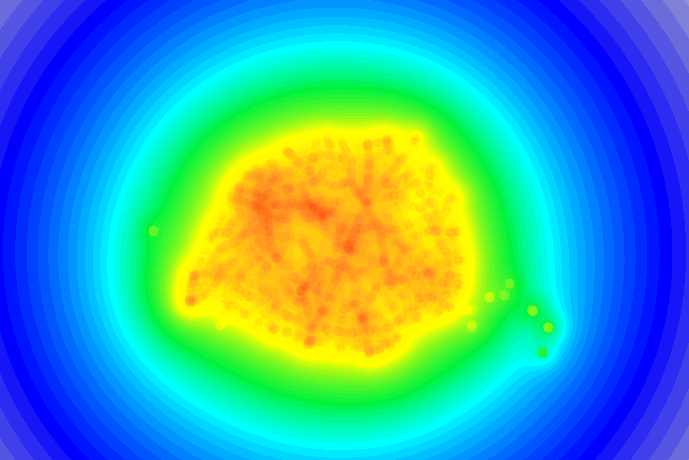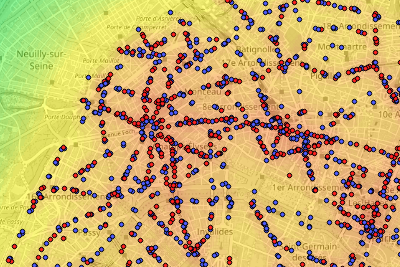Lighting from advertising in Paris
May 1, 2017 - Philippe Deverchère
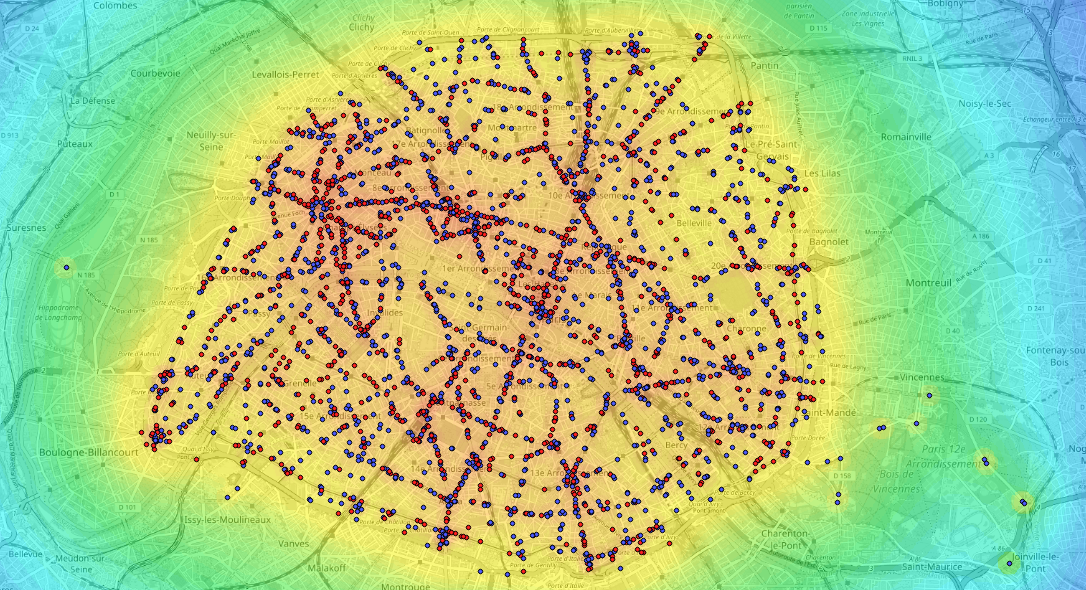
Map of all advertising devices in the city of Paris.
The City of Paris has provided Open Data access to street lighting data. The data itself is accessible on the Paris Data website. We applaud this willingness to make these data sets available to the public in great detail (particularly with regard to geolocation and device power). France's other major cities would do well to draw inspiration from this initiative and make this data of general interest available to the public.
In addition to street lighting data, the dataset made available includes illuminated street furniture (according to the terminology used in the Open Data dataset). This mainly concerns street furniture used for advertising: bus shelters and urban furniture for information (MUPI). It should be noted that MUPI, also known as "lollipops", generally support both advertising displays and municipal information.
It is therefore natural to ask what contribution illuminated street furniture makes to the light pollution produced by the city of Paris. For this purpose, a simulation was carried out with Otus software, using as input only the light sources associated with MUPI advertising and bus shelters. Street lighting was therefore ignored in this simulation (as its intensity is much higher than that of billboards, the latter's contribution would be completely drowned out by the halo of street lighting). The assumptions concerning the physical characteristics of advertising lighting are as follows:
-
Power: we use the total power of each device (Power field) provided in the Open Data, from which we systematically subtract 30% to take into account what devolves to ferromagnetic and electronic components, as well as any motors used for rotary advertising.
-
ULOR (Upward Light Output Ratio):. we use an average value of 40% for the whole park, this to take into account the fact that, for bus shelters, one illuminated side is inside the shelter with therefore a lower emission compared to a "lollipop" type panel for which a ULOR value of the order of 50% should be used.
The map below shows the location of illuminated advertising devices. Street furniture for information", typically lollipops, are in red (code "MUPI" in the "Category of structure" field of the database) and bus shelters in blue (codes "ABB" and "ABP").
There are a total of 3246 devices declared in the Open Data database: 2016 street furniture devices supporting only advertising or municipal signage and 1230 Bus shelters.
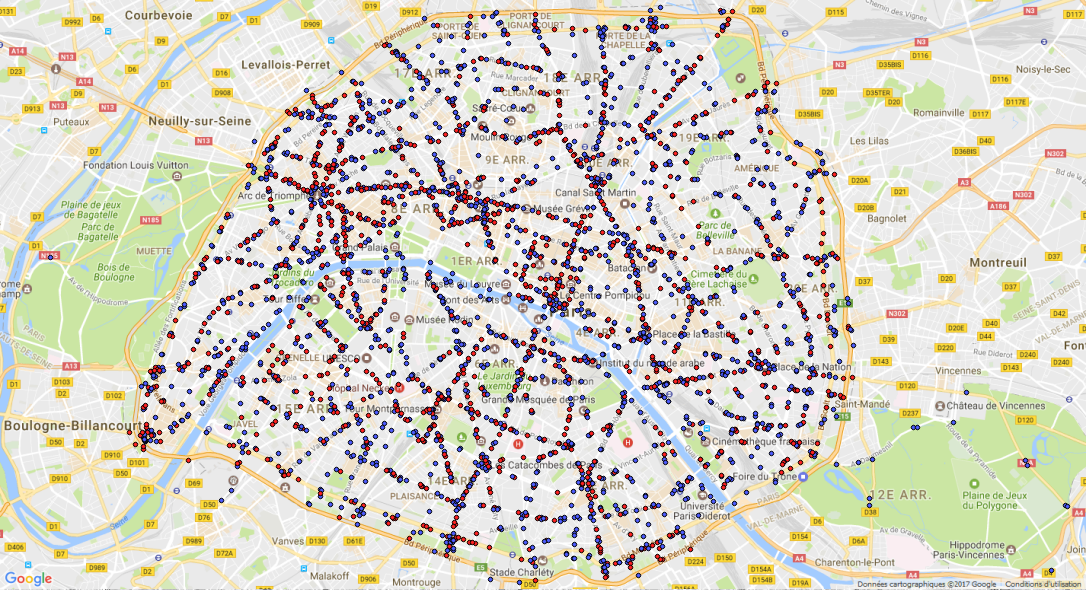
The result of the simulation is shown below. The figure on the left shows the raw map from Otus, with a color scale that reflects the quality of the sky at each point (see below for an explanation of this color scale). In the figure on the right, this map is superimposed in a GIS on the illuminated street furniture layout map.
It's easy to see from the map that the districts most illuminated by illuminated street furniture displays are located towards Etoile, the department stores on Boulevard Haussmann, Châtelet, Montparnasse, Place d'Italie and the Gare du Nord and Gare de l'Est stations.
The OTUS software color scale
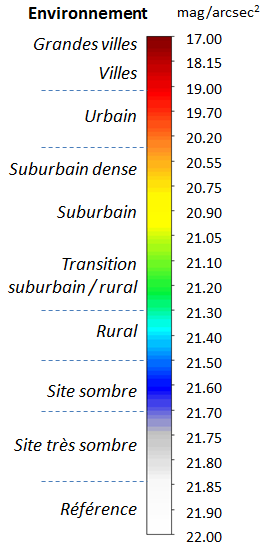
The color scale used in the maps produced by Otus is representative of a sky quality index. Each color level in the scale is associated with a background brightness value, usually expressed in magnitudes per arcsecond squared (mag/arcsec2). At each point on a map, the background luminosity value is calculated by taking into account all contributing light sources: the closest and most powerful light sources obviously contribute more than more distant or less powerful light sources.
The scale shown opposite is that used in the map of light pollution produced by illuminated street furniture in the city of Paris. It can therefore be seen that the lighting produced by illuminated street furniture (which is used mainly for advertising purposes) alone generates light pollution that is typical of a suburban or even urban environment in some places.
As previously stated, only the contribution of illuminated street furniture lighting is taken into account in this simulation, and only in the city of Paris. Towns on the outskirts of Paris would have at least equivalent contributions from this type of lighting, bearing in mind that many sites in the capital remain relatively protected due to the presence of historic monuments. It should be noted, however, that billboard advertising is authorized in a large part of Paris by derogation under the local advertising regulations (RLP). The Environment Code stipulates that advertising cannot be displayed in the vicinity of historic monuments (article L581-8).

